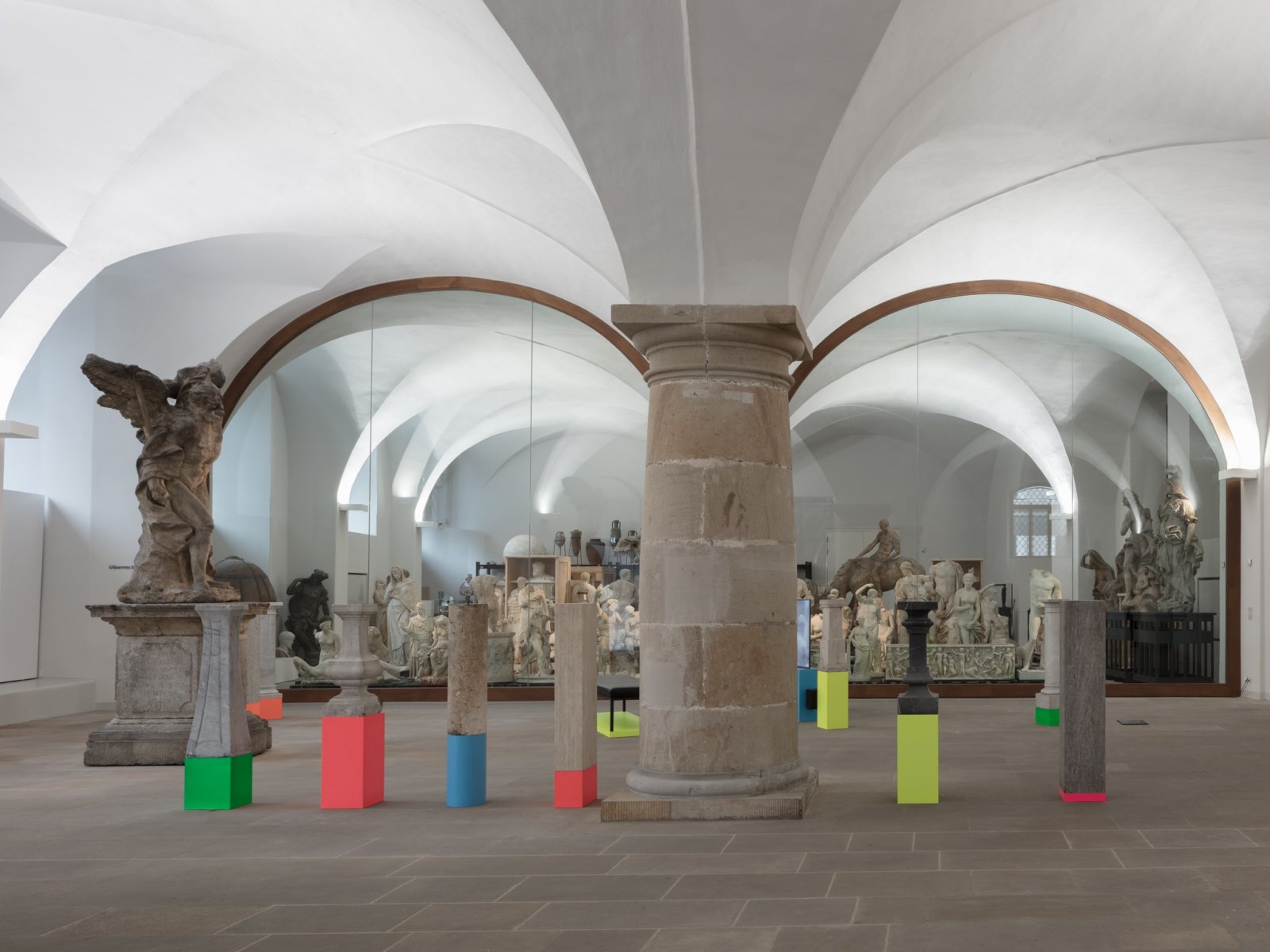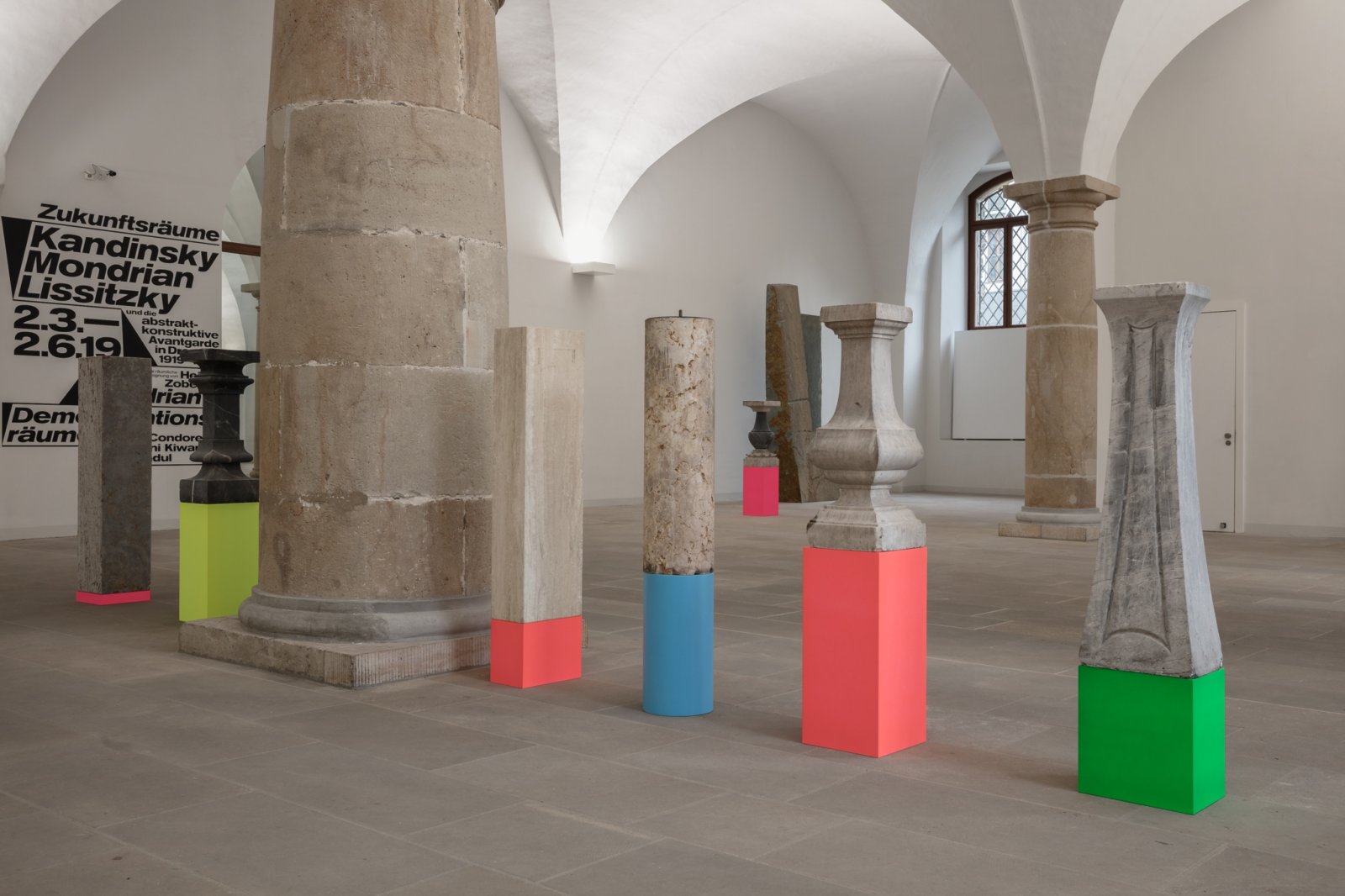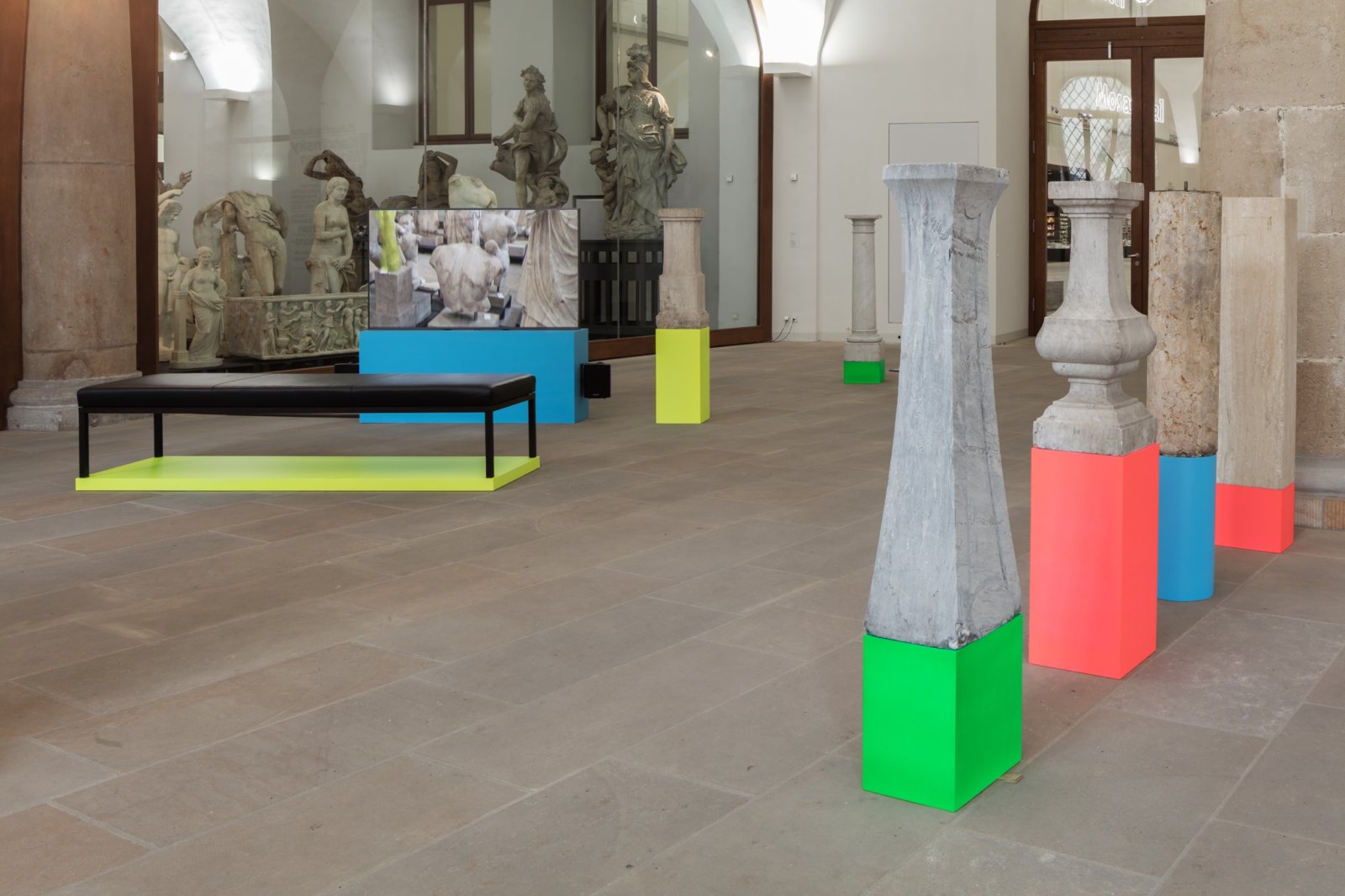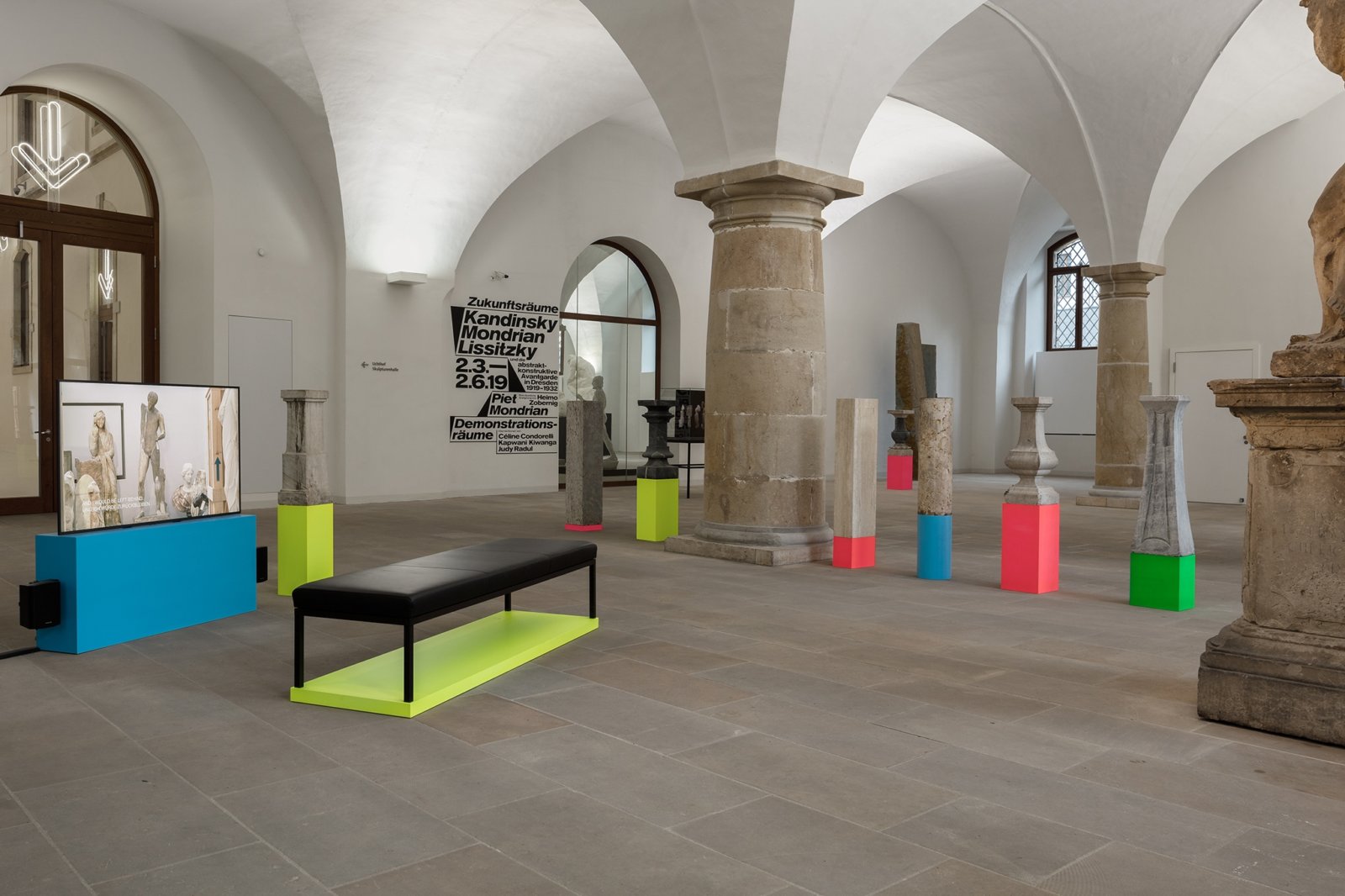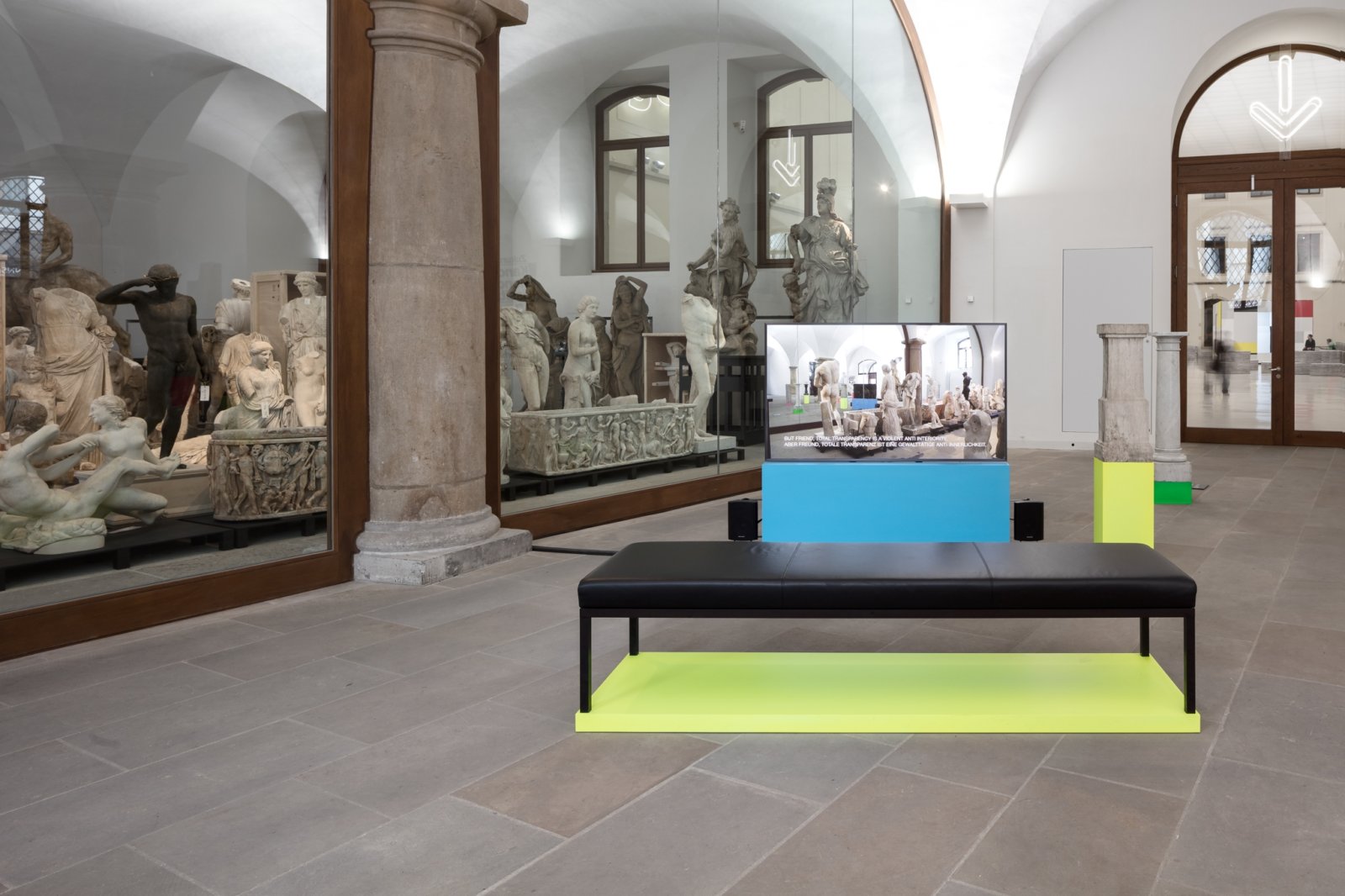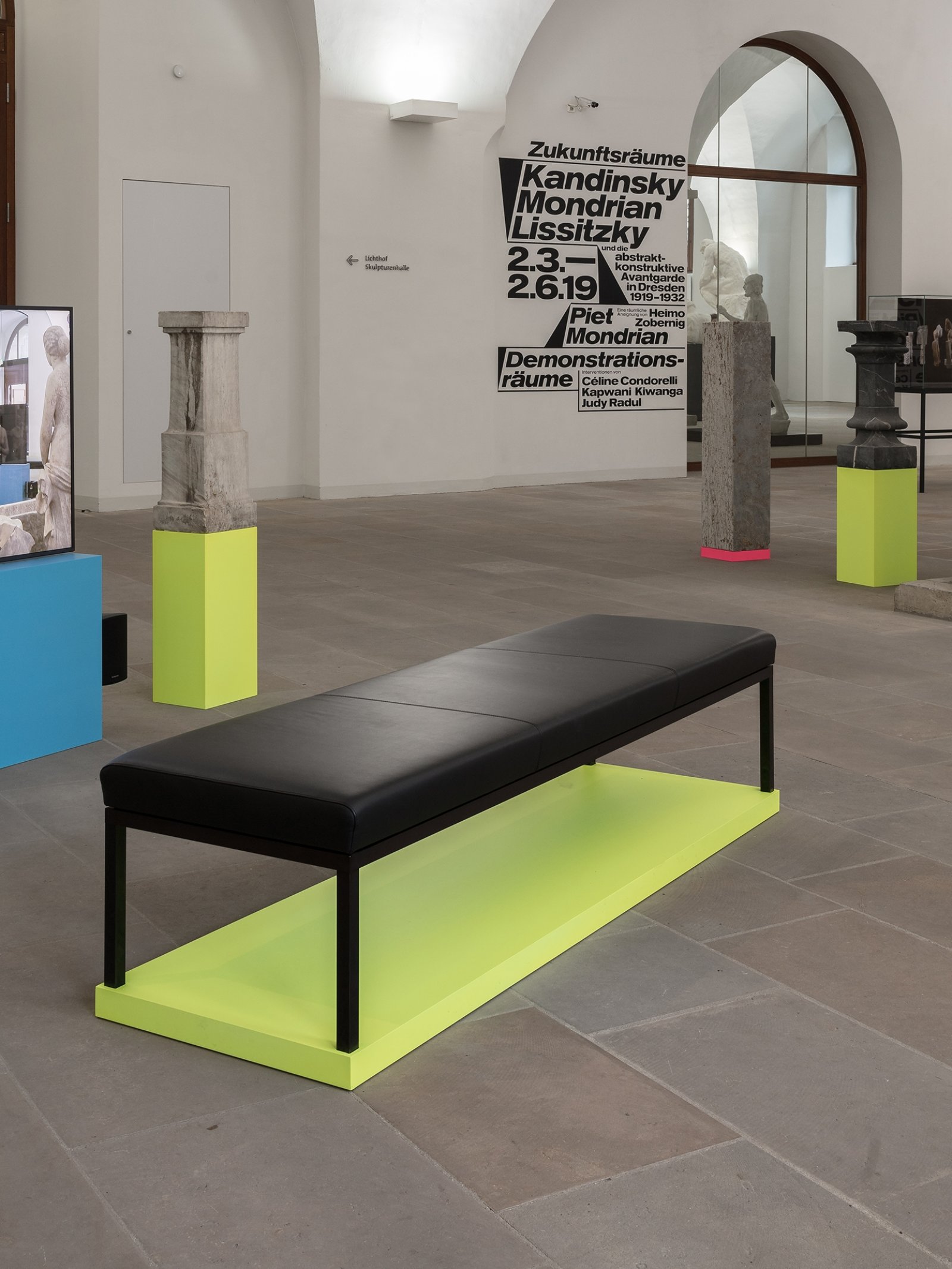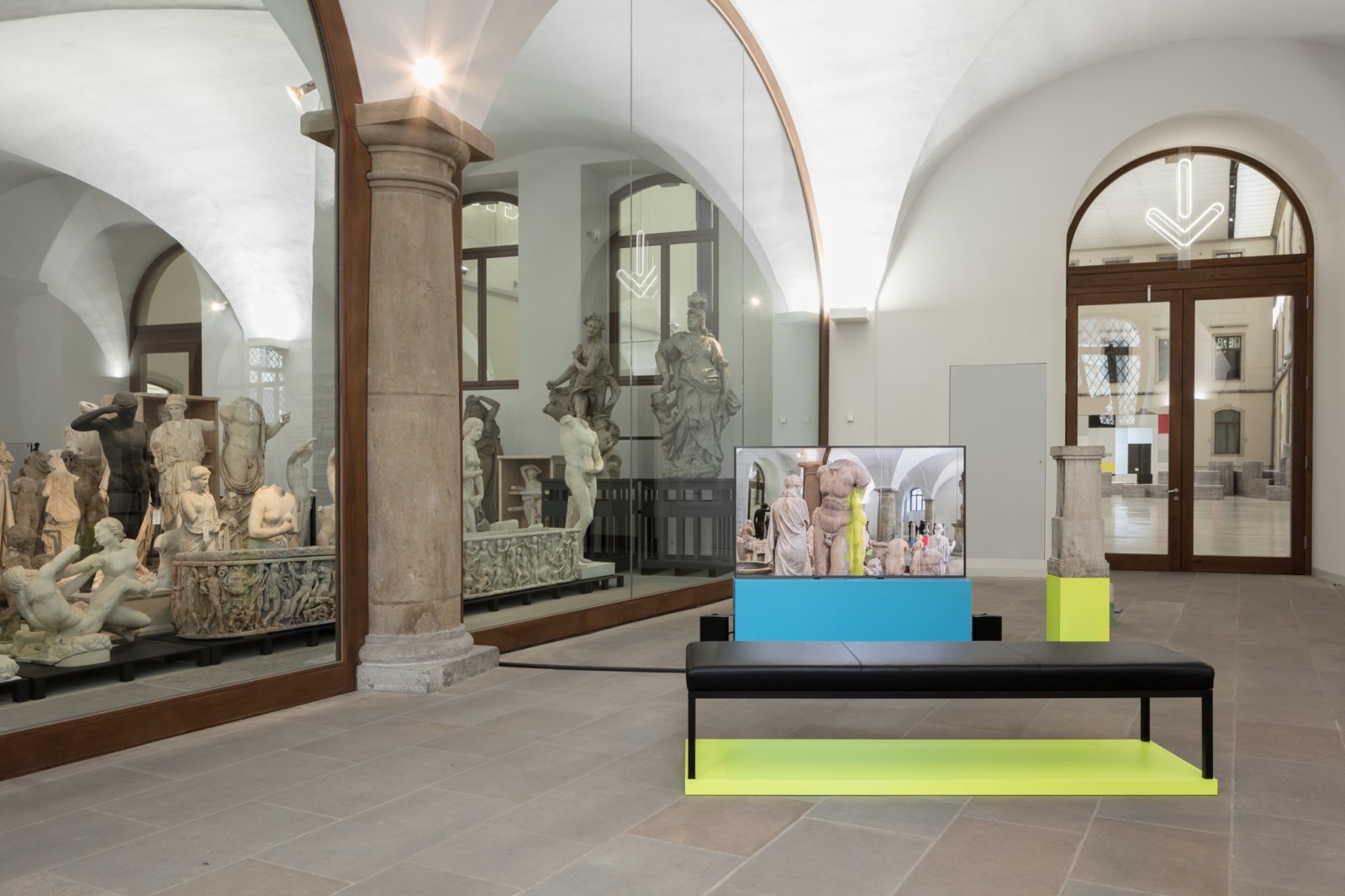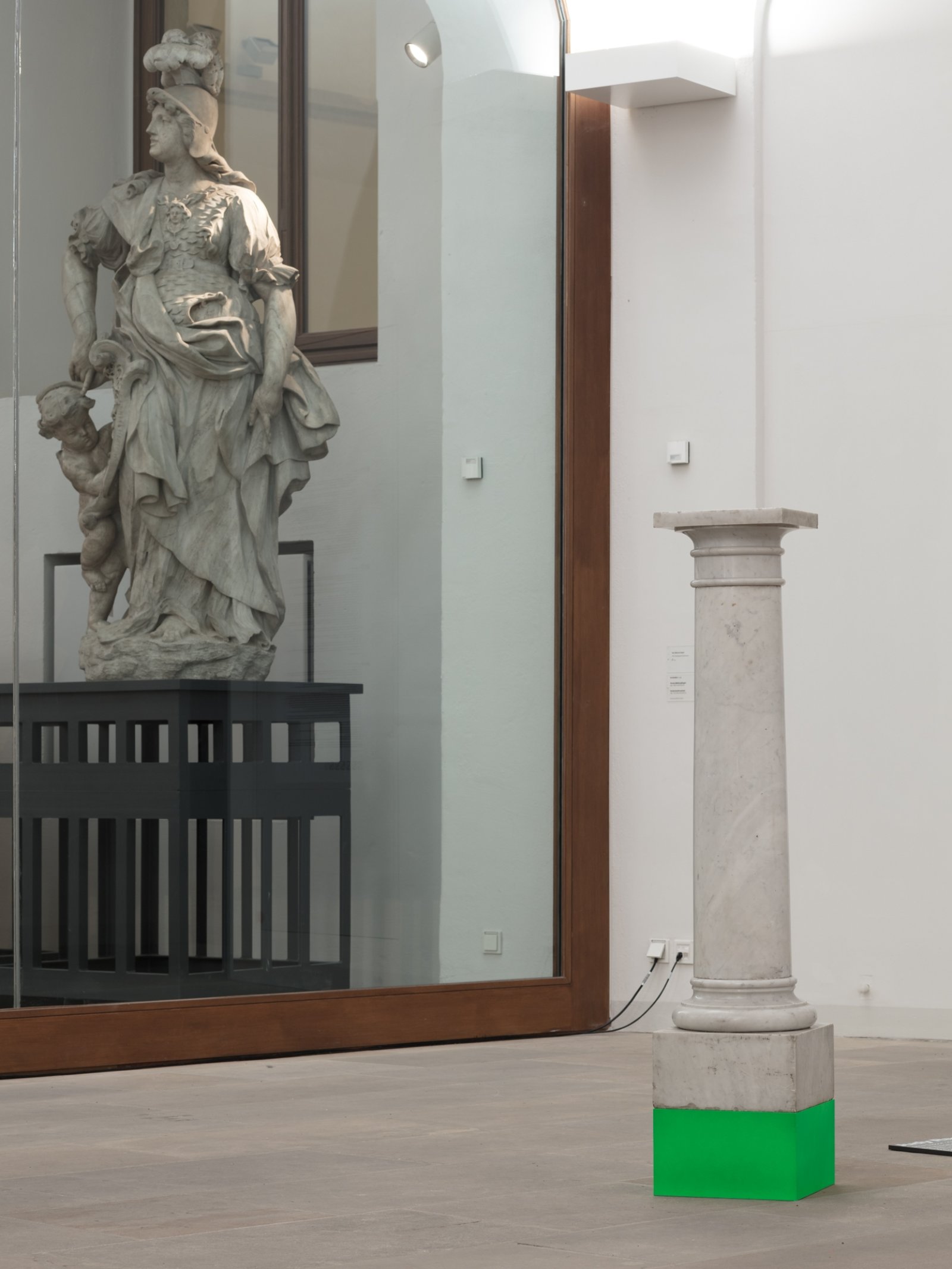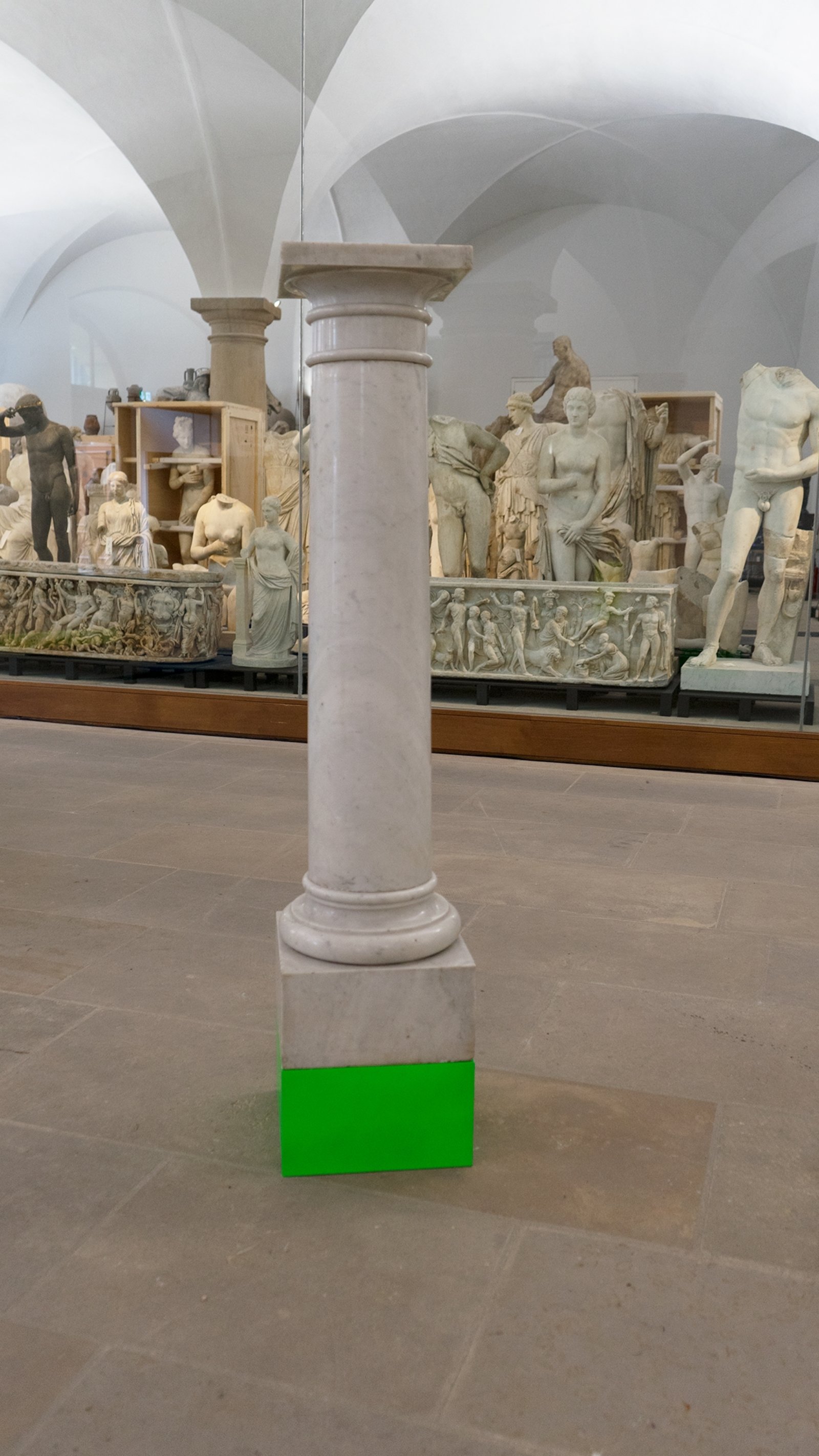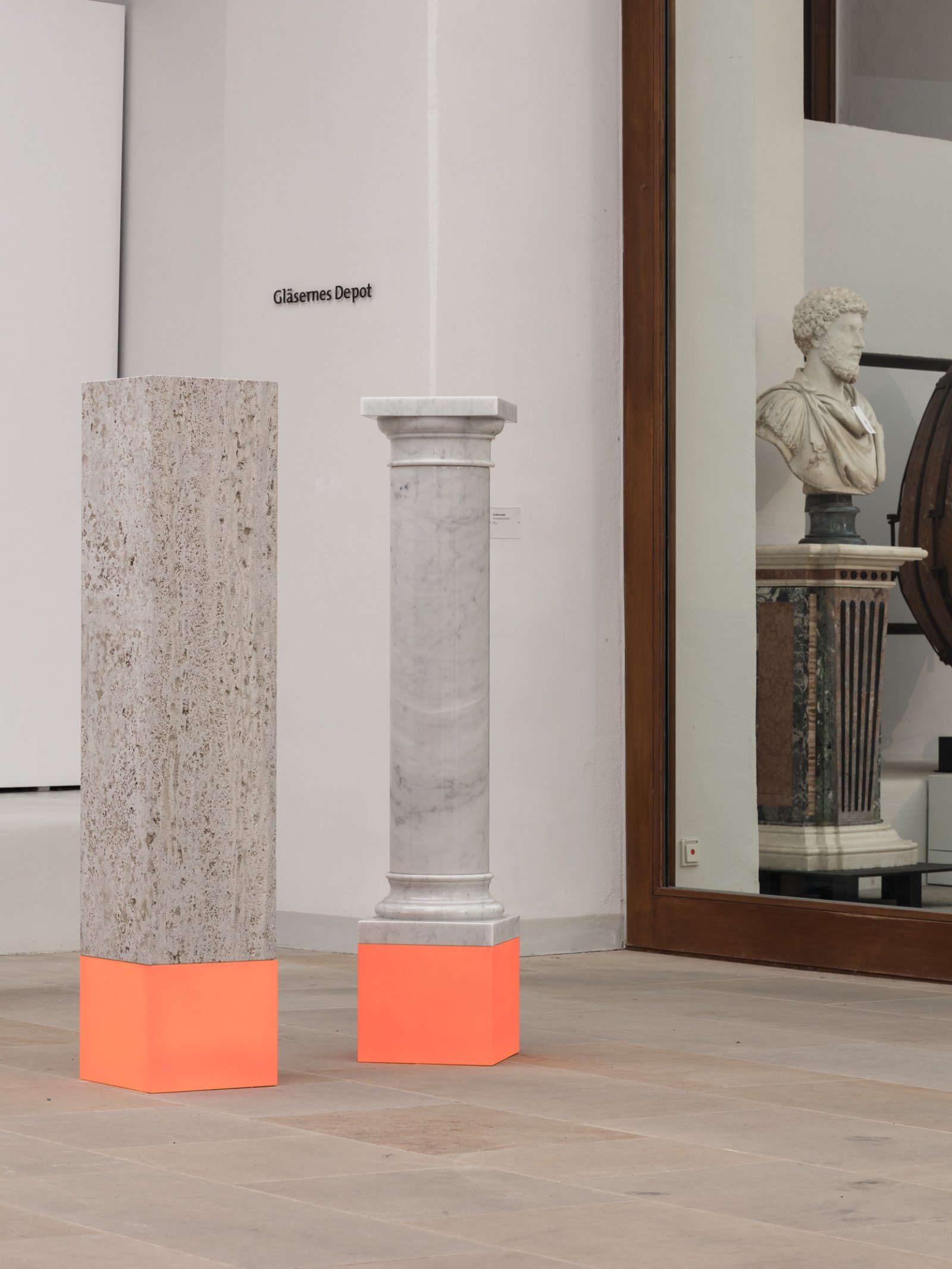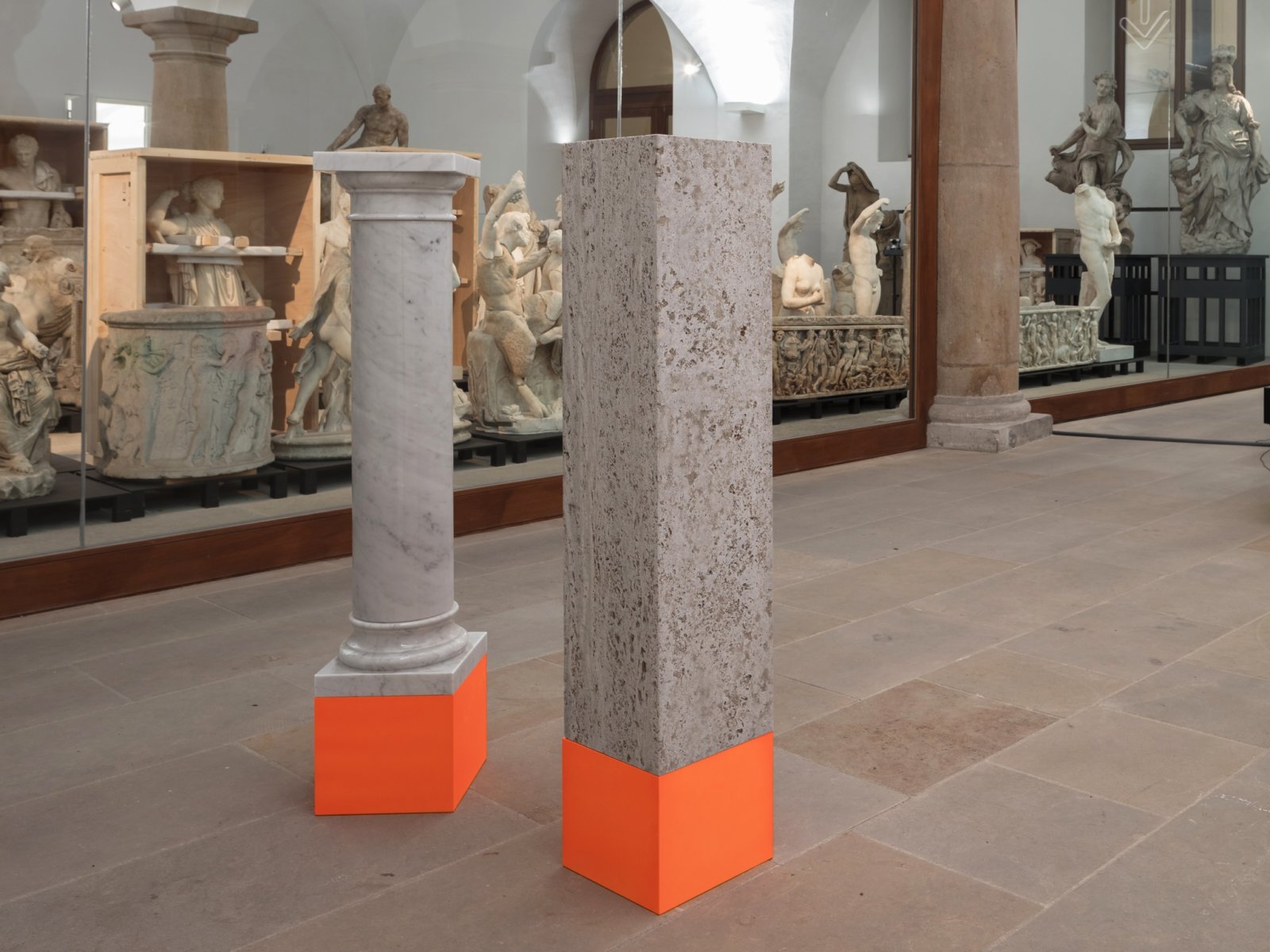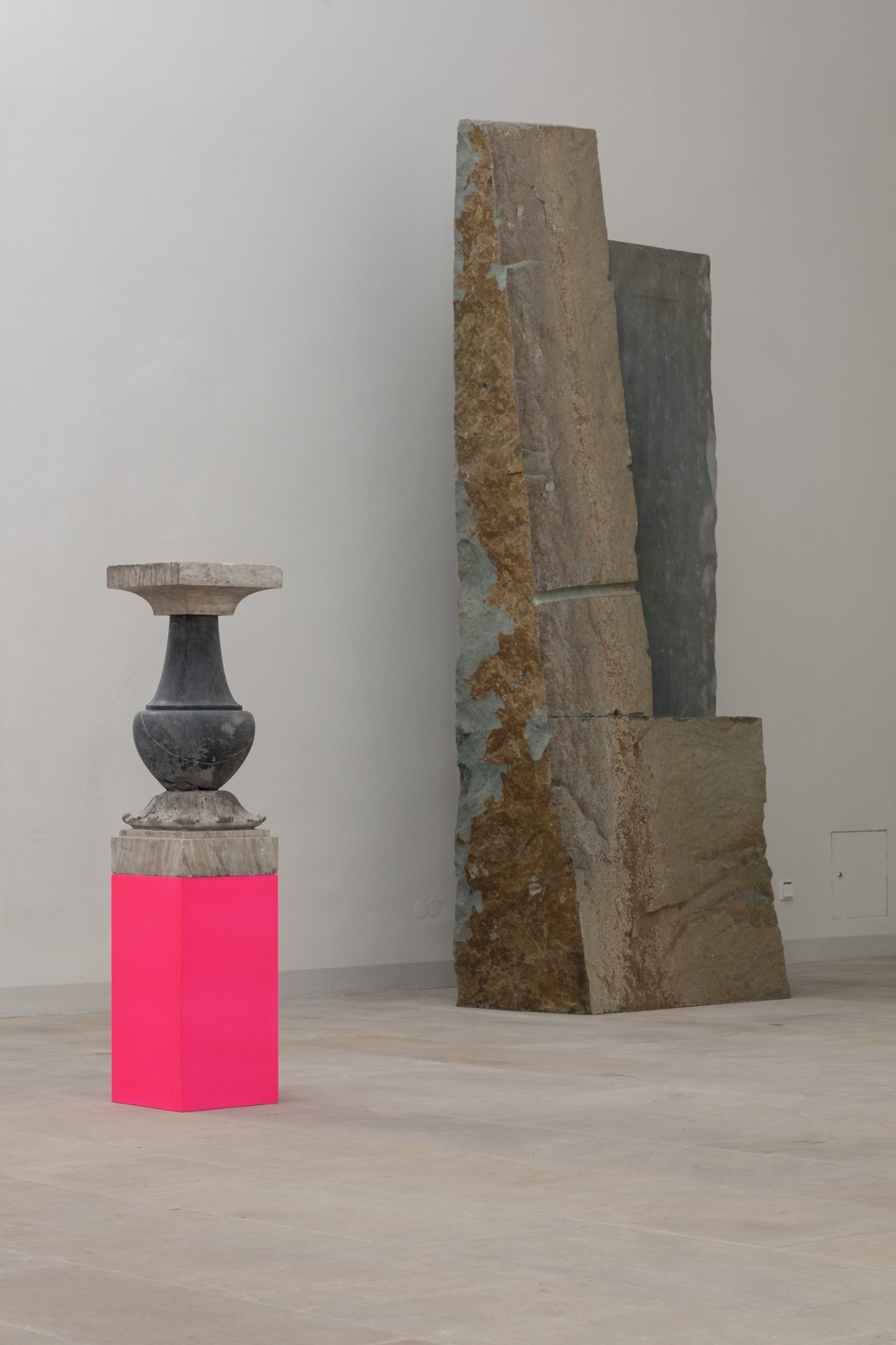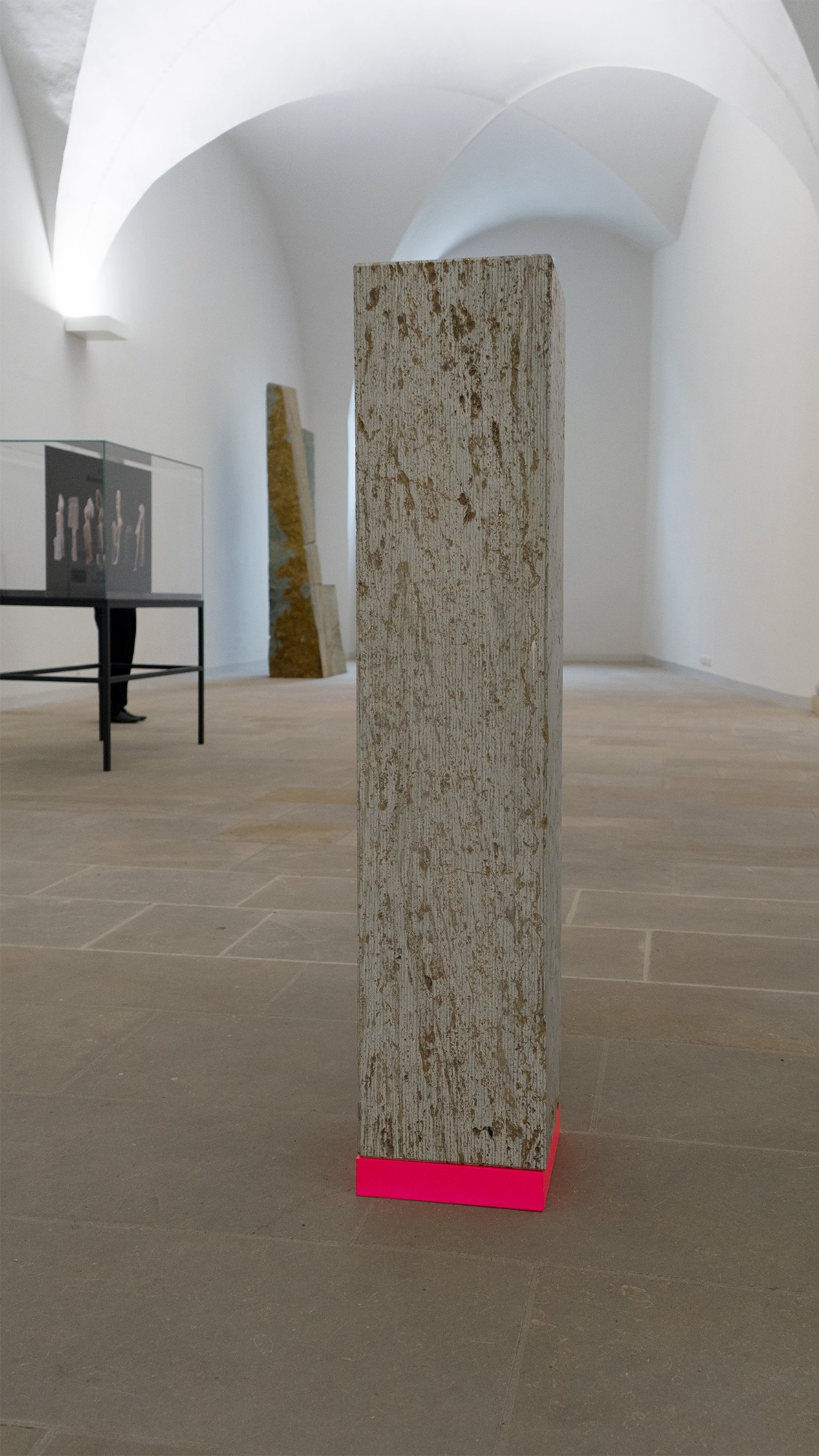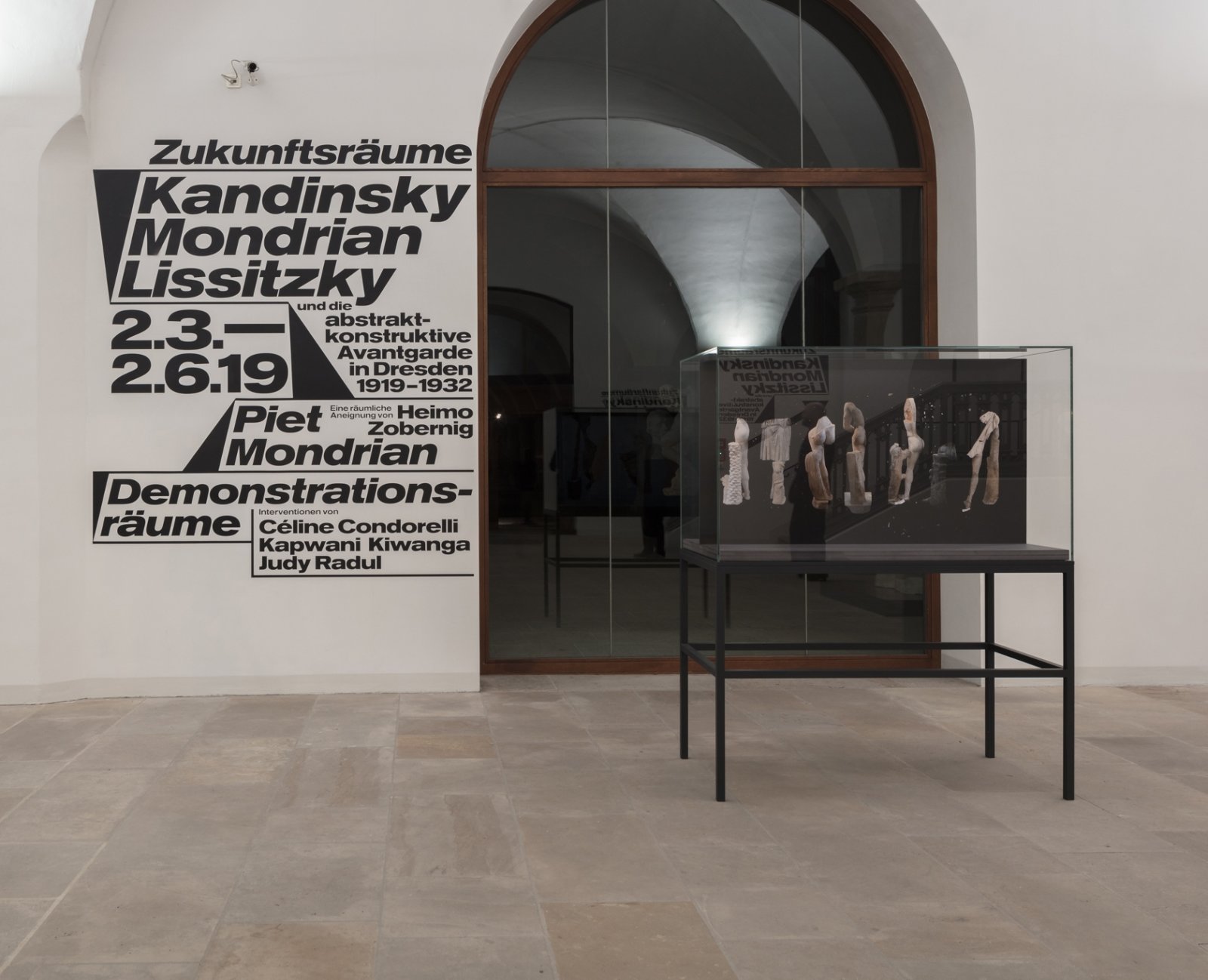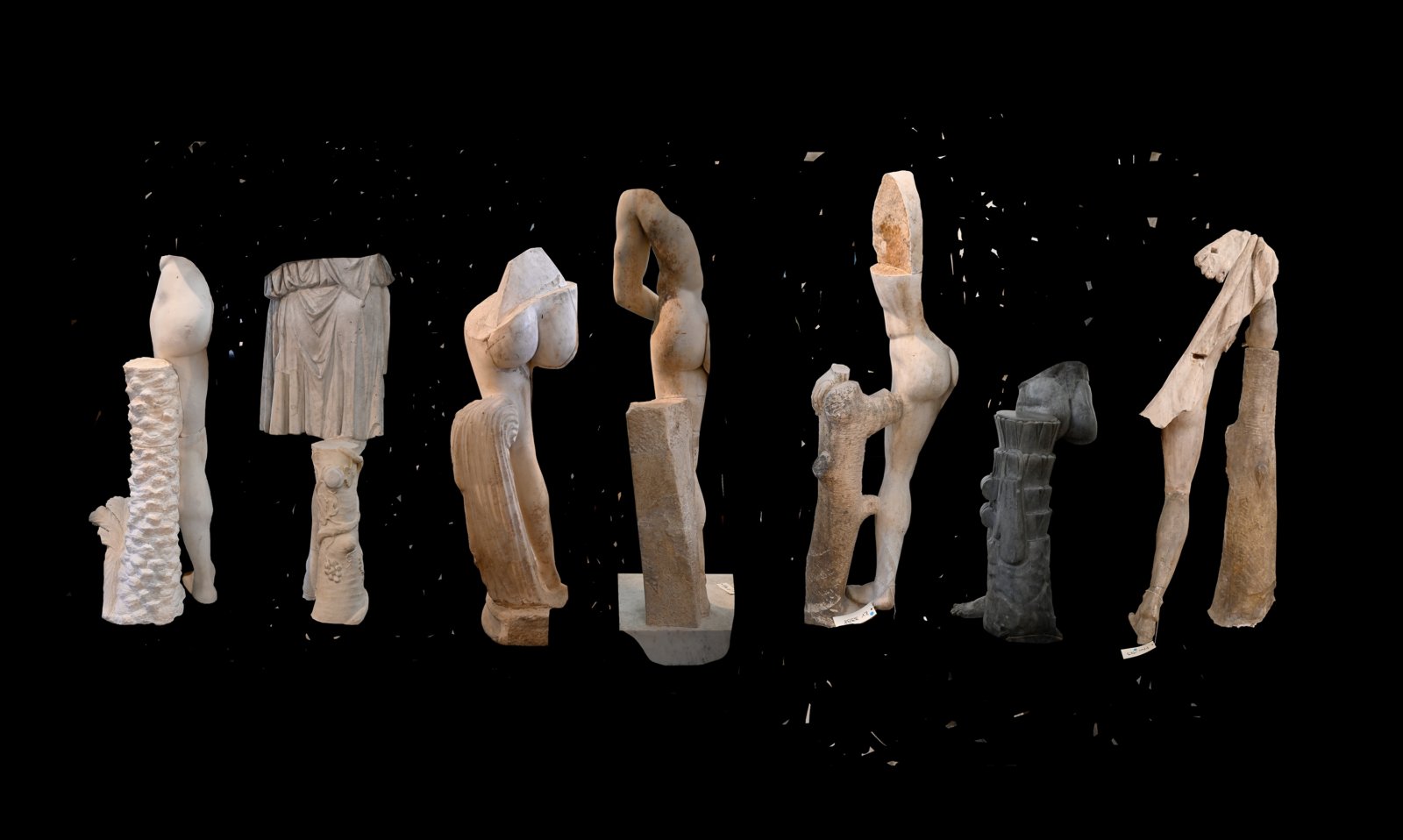Judy Radul – Demonstration Rooms, MARCH 2–JUNE 2, 2019
Judy Radul
Demonstrationsräume. Céline Condorelli, Kapwani Kiwanga, Judy Radul
March 2–June 2, 2019
Albertinum, Dresden, Germany
The artists Céline Condorelli, Kapwani Kiwanga, and Judy Radul were invited, within the framework of the project Demonstration Rooms, to develop artistic interventions in the collection presentation of the Albertinum. In different spaces of the museum, they show site-specific works that direct the focus to those elements of the exhibition that otherwise would be easily overlooked: benches, light, plinths, and the transparent walls of the Albertinum's special viewing depot. The new commissions reflect the display of art as well as habits of seeing and of spatial perception. In doing so, they take up the ideas of El Lissitzky, who used the term “demonstration rooms” for his works, such as the Room for Abstract Art, which had originally been created as an exhibition space for the Internationale Kunstausstellung Dresden in 1926 and can now be seen as a reconstruction in the exhibition Visionary Spaces. With his unconventional spatial design, he aimed to activate art spectatorship.
With Show Support, the artist Judy Radul (*1962) highlights how elements of support and display tend to disappear behind the objects which they show. For instance, one might not notice that a stone figure is supported by a well-placed tree trunk just behind the figure’s leg.
The Albertinum viewing depot which Radul takes as a site of intervention presents a selection of the sculpture collection. The mainly figurative sculptures are viewable through large windows but viewers may not enter the space. The front-facing arrangement of the sculptures reduces them to a frontal picture seen through the windows.
In several places in the depot, Radul has placed video cameras, controlled with her custom motion control system, that allow other perspectives on the sculptures. A live mix of these video images are played on a video monitor in the space of the viewer. The monitor is part of an installation of an archive of plinths from the Albertinum storage. In turn, these plinths are put on pedestals based on the gaudy colour range of highlighters. The result is a system that visualizes the hierarchies of seeing and showing as well as the associated relationship with the observer.
